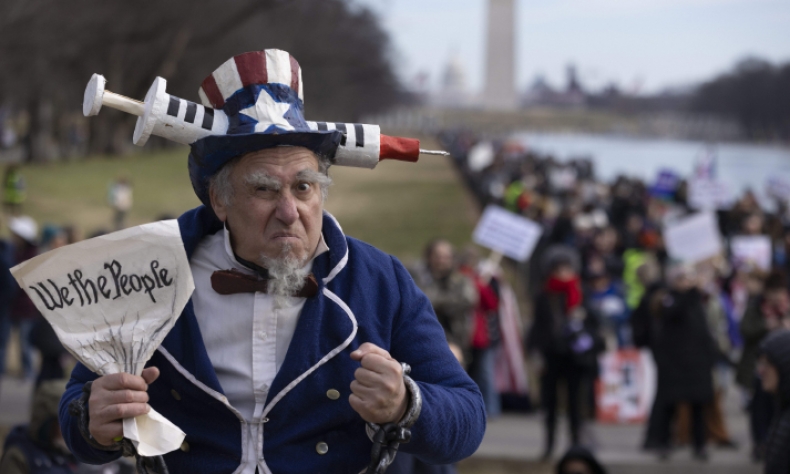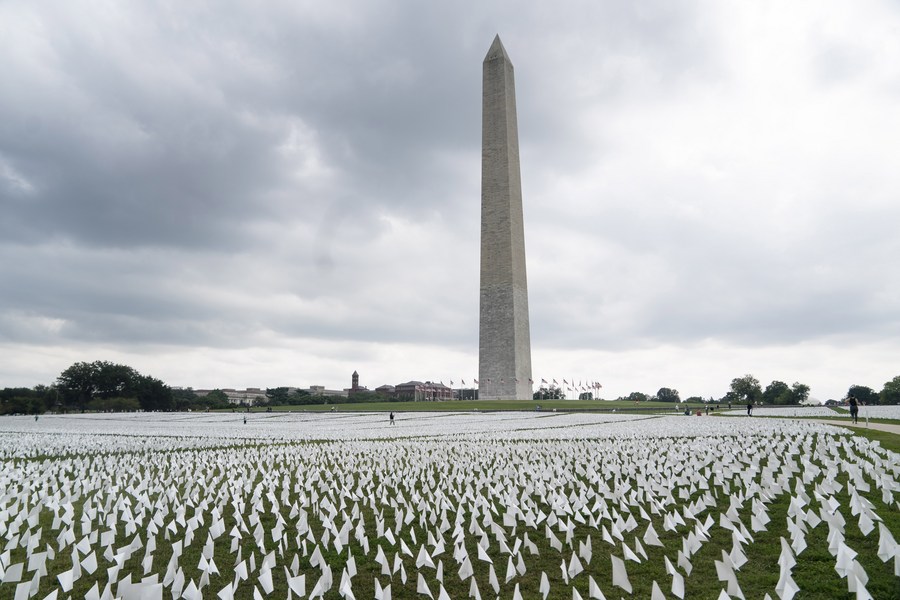COVID-19: History’s Great Divider?

If the U.S., by constantly criticizing Chinese efforts, actually was to get China to give up its anti-pandemic strategy, would that really narrow the existing divide?
Over the past 2.5 years, the disjointed American response to COVID-19 has astounded the world. When the pandemic broke out, few in the United States had expected the virus would infect tens of millions across the nation. And no one had anticipated the death toll would exceed 1 million (as of May 17).
The American people, living in the world’s largest economy with the most abundant medical resources and the most advanced technology at its disposal, fell victim to initial poor policy decisions taken by former President Donald Trump’s administration and the ensuing patchwork of responses by state and local governments—divided sharply along partisan lines. After Joe Biden took over the presidency in early 2021, the situation has remained largely unchanged due to the politicization of many essential efforts needed to curb virus transmission. China, on the other hand, has mostly maintained effective control of the virus through proactive policies that place the lives of its population above all else.
This stark contrast has greatly divided public opinion on the American model of governance.
The international community begins to rethink the basic values of democracy, freedom and human rights. For a long time, the U.S. presented itself as the global moral leader; whether a country was democratic and protective of human rights, to certain extent, could only be judged by the U.S. rather than the people of that country.
Yet its poor performance in pandemic prevention coupled with lingering domestic turmoil has seriously damaged the American Government’s domestic and global approval. As The New York Times commented on May 16, “The magnitude of loss is nearly impossible to grasp. More Americans have died from COVID-19 than in two decades of car crashes or on battlefields in all of the country’s wars combined.”

Meanwhile, China upholds that the right to life and health is a basic human right and protecting the health and safety of citizens, especially the most vulnerable groups, is the top priority. The death toll from COVID-19 in the Chinese mainland was less than 6,000 as of May 19.
Then came the American defeat in the ideological and public opinion war the U.S. tried to wage against China. Since the 1970s, the purpose of American engagement with China has been to gradually encourage the Chinese to identify with Western concepts of governance. With the development of China’s economy, it was widely assumed China would have no choice but to adopt a political system like that of the U.S. Plus, the latter’s export of culture and ideology has always been its major strength.
But with the outbreak of COVID-19, the sharp contrast in both nations’ pandemic management has greatly stimulated Chinese people’s sense of patriotism and self-confidence. In 2020, the first year of the COVID-19 pandemic, several polling organizations in the U.S., the United Kingdom and Switzerland reported that the Chinese people’s satisfaction with their government’s response to the COVID-19 pandemic was the highest among all countries surveyed.
Unfortunately, the U.S. has continuously denounced almost each and every one of China’s response policies as “draconian” or “authoritarian.”
Whether or not to continue its dynamic zero-COVID-19 strategy—i.e., stamping out every flare-up in the shortest possible time—remains a tough decision for the Chinese Government. But if the U.S., by constantly criticizing Chinese efforts, actually was to get China to give up its anti-pandemic strategy, would that really narrow the existing divide?
 Facebook
Facebook
 Twitter
Twitter
 Linkedin
Linkedin
 Google +
Google +










